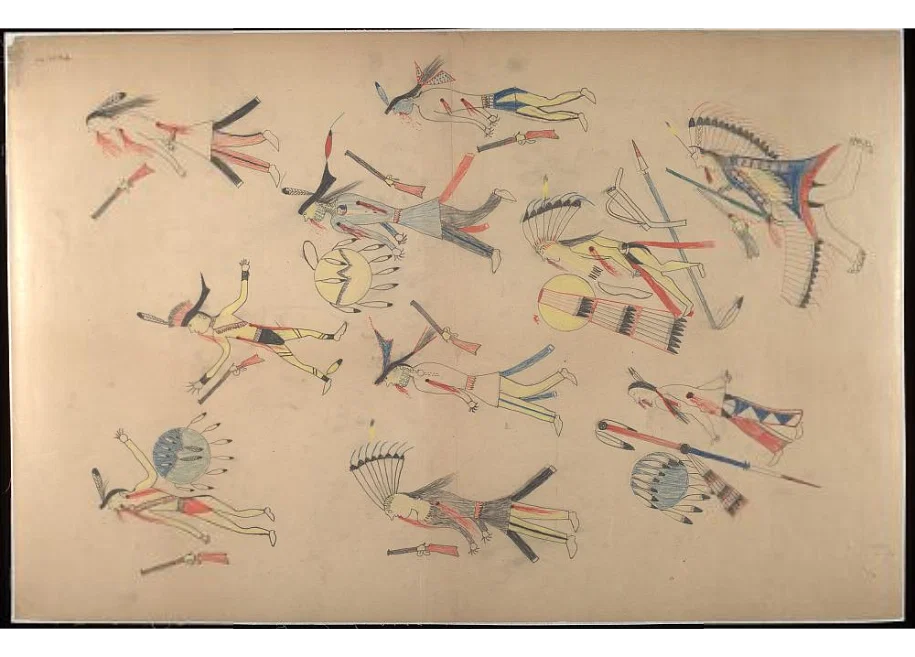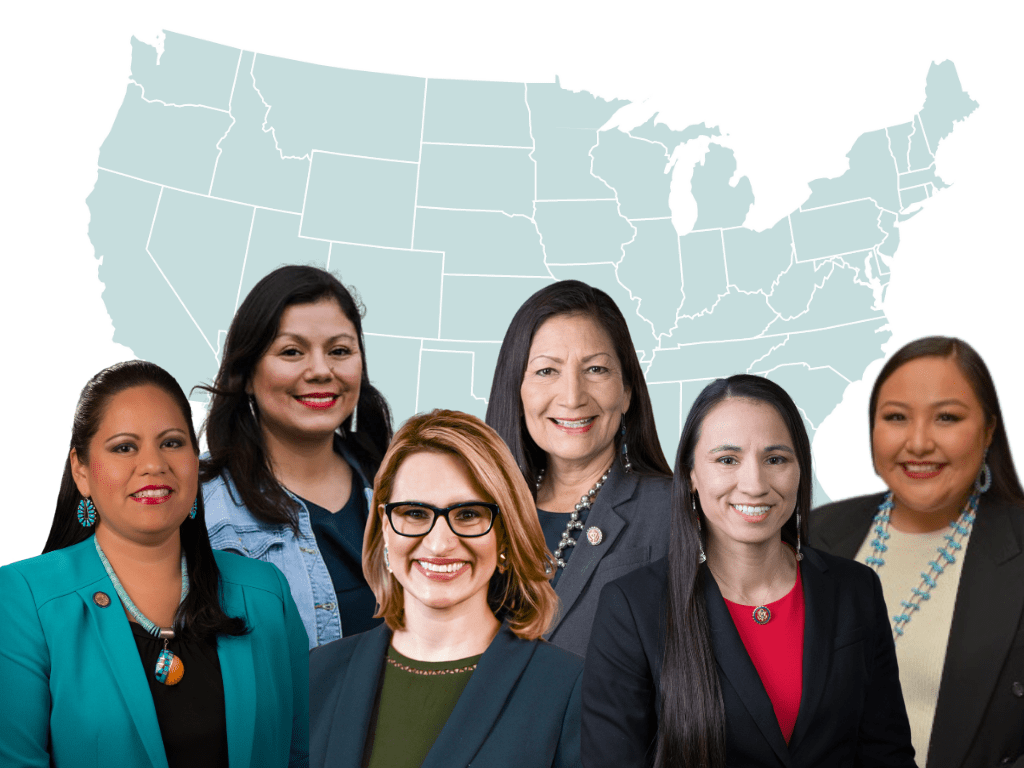Nearly 150 years after Little Bighorn, the spirit of Native resistance lives on as today’s Indigenous leaders fight for justice, representation and sovereignty in every corner of political life.
This essay is part of an ongoing Gender & Democracy series, presented in partnership with Groundswell Fund and Groundswell Action Fund, highlighting the work of Groundswell partners advancing inclusive democracy. You’ll find stories, reflections and accomplishments—told in their own words—by grassroots leaders, women of color, Indigenous women, and trans and gender-expansive people supported by Groundswell. By amplifying these voices—their solutions, communities, challenges and victories—our shared goal is to show how intersectional organizing strengthens democracy.
On June 25-26, 1876, a pivotal moment in Native history unfolded along the banks of the Little Bighorn River in present-day Montana. There, Lakota, Cheyenne and Arapaho warriors stood against Lieutenant Colonel George Armstrong Custer and the Seventh Cavalry of the U.S. Army to defend their way of life.
To most, this moment is known as the Battle of Little Bighorn. To us, the Lakota, it is Peȟiŋ Haŋska Kasota Po* or “when they wiped out Long Hair.”
This was more than a military victory. It was a bold act of resistance against U.S. attempts to erase Native people. Despite the overwhelming odds, our ancestors stood their ground, a profound reminder that Native people would not be pushed aside or silenced.
Nearly 150 years later, their same spirit of resistance and determination lives on. And while the battlegrounds may have changed, the stakes remain.
We are rooted in community, memory and the knowledge that when Native leaders rise, they do so for all of us.

Today, the fight for Native futures unfolds in legislative chambers, courtrooms and school board meetings. These are spaces where Native people should have the right to exist because they are where laws are written, budgets passed and policies shaped. All of these initiatives impact us—our access to clean water, affordable housing, addiction recovery, violence prevention and healthcare for our elders and children.
These crises aren’t new. They are the latest chapter in a long history of systemic disinvestment, forced displacement and colonial violence. And we must meet them with the determined tenacity our ancestors fought with so many years ago.
The courage to fight means showing up and demanding that our voices be heard. We should see ourselves in city councils, state legislatures, school boards and on judicial benches. According to BallotReady, over 110,000 elected positions will be on the ballot nationwide in 2026:
- 6,000 state legislative seats
- 3,000+ mayoral races
- 19,000 city council seats
- 18,000 school board seats
- 2,000+ state trial court judgeships
- 50 state Supreme Court seats
Each position is an opportunity to fight for our communities. Each vote cast is an avenue to protect what we love and shape a future grounded in transformative justice. Each Native leader elected is a continuation of the resistance that began generations ago.
Peȟiŋ Haŋska Kasota Po teaches us that improbable odds do not determine the outcome. Instead, we are rooted in community, memory and the knowledge that when Native leaders rise, they do so for all of us.
For allies, this is your call to action. Learn the history of Native resistance and understand how indigenous legacies persist in modern policies and systems. Take action to uplift the voices of Native elected and community leaders. Demand inclusion in decision-making spaces and media coverage. Advocate for school curricula that reflects accurate Native history. Use the tools of democracy to dismantle systems that perpetuate harm toward Native communities.

When Native leaders take up space, we bring with us generations of cultural knowledge, community accountability and visionary approaches to justice. The fight today is not only to survive. We lead to create a world where all of our communities can thrive.
More than 149 years ago, a courageous group of leaders stood their ground so we could stand ours. We are still here, still fighting and still building a future that remembers who we are and honors all we will become.
Special thank you to Richard Sunka Nunpa for the Lakota translation.
!function(f,b,e,v,n,t,s)
{if(f.fbq)return;n=f.fbq=function(){n.callMethod?
n.callMethod.apply(n,arguments):n.queue.push(arguments)};
if(!f._fbq)f._fbq=n;n.push=n;n.loaded=!0;n.version=’2.0′;
n.queue=[];t=b.createElement(e);t.async=!0;
t.src=v;s=b.getElementsByTagName(e)[0];
s.parentNode.insertBefore(t,s)}(window,document,’script’,
‘https://connect.facebook.net/en_US/fbevents.js’);
fbq(‘init’, ‘200522034604820’);
fbq(‘track’, ‘PageView’);
Great Job Mica Standing Soldier & the Team @ Ms. Magazine Source link for sharing this story.



